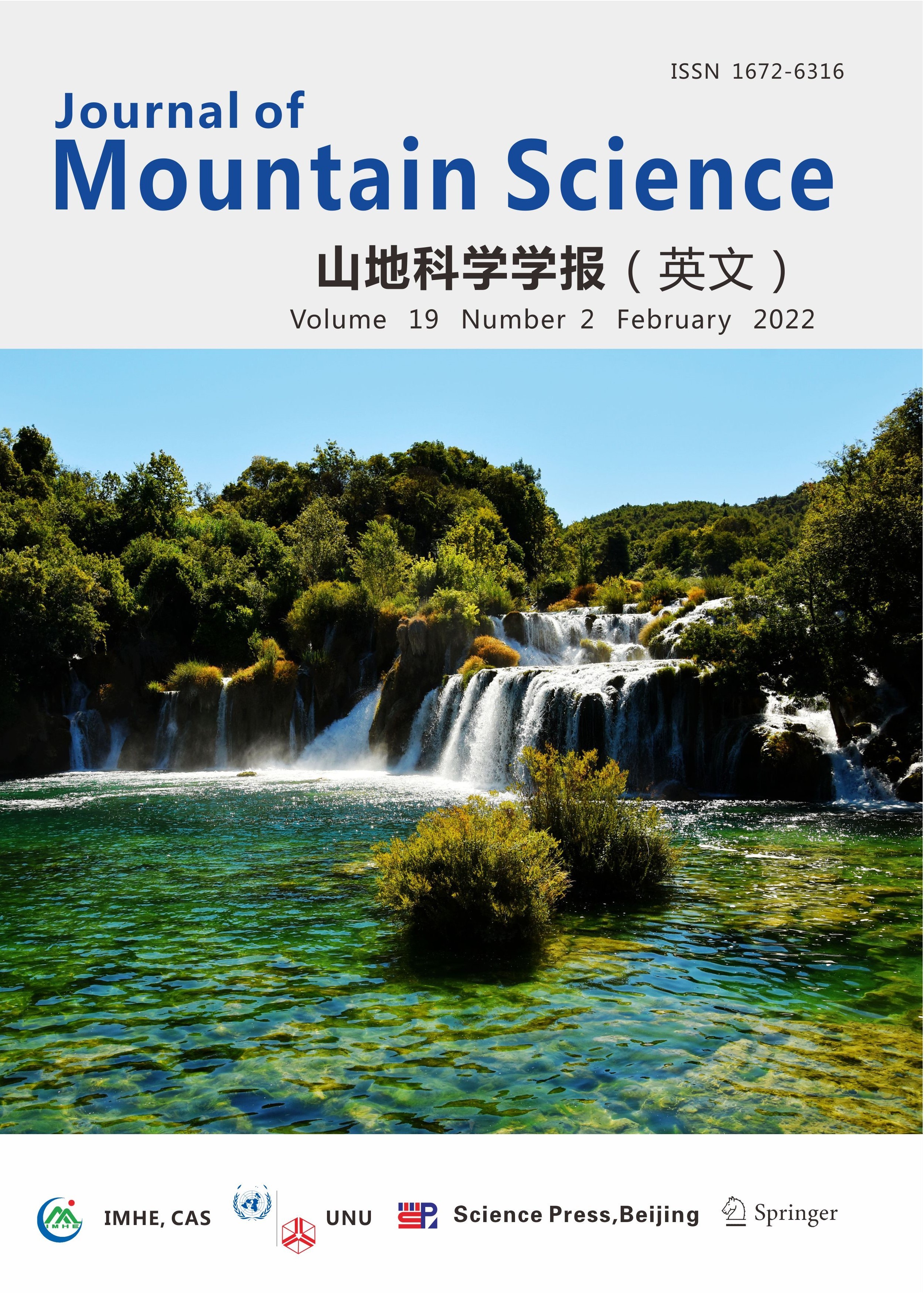2022年19卷2期封面文章:
喀斯特地区人口的内陆-沿海转变:以克罗地亚卡尔卡国家公园为例
Highlights: 1)喀斯特地区人口转变;2)地理可能性论;3)卡尔卡国家公园
Cover story
The karst regions have special geographical features, as water infiltrates into the depths in the mountains, but rises in abundant springs at the foot of the mountains. Limestone and dolomite terrains usually have poor quality soils, and the rocky relief often causes difficulties for transport. Due to the above facts, the life in karst areas has never been easy, especially when agriculture was the basis of livelihood. However, the same karstic natural settings may lead to a spectacular morphology, which includes caves, waterfalls and collapse dolines. Nowadays, these karstic attractions generate significant incomes through tourism and, due to their peculiarity, enjoy nature conservation status. The example of karst terrains brings us to one of the central themes of geographical thinking that examines the relationship between natural settings and social factors. The karstic example above demonstrates that natural features have a significant impact on social opportunities, but do not fully determine them. In addition, these effects can even vary over time. The theoretical framework for this idea is called “geographic possibilism”. Nowadays, these issues can be examined more sophistically than earlier with the help of statistical methods and GIS tools as it is presented in the article titled “Inland-coastal demographic transformations in a karst area: a case study of the surroundings of Krka National Park (Croatia)” in Journal of Mountain Science ((Vol. 19., No. 2).
Krka National Park is one of the most visited national parks in Croatia. Its most spectacular landforms are the limestone tufa waterfalls on the Krka River near the town of Skradin, as shown in the cover. The waterfalls were created by karst processes. The limestone tufa precipitates from the high carbonate-content of the water and covers any object in the water, such as fallen trees and other plants. Thus, through a self-reinforcing feedback, small barriers grow to larger dams, behind which lakes accumulate, and the waterfalls increase in height. The primary purpose of Krka National Park is to protect these beautiful features. However, tourism management is also among its tasks. In addition, more and more people today are realizing that the maintenance of local communities is also part of the responsibilities of national parks. In the example of Krka National Park and its wider surroundings, Šibenik-Knin County, we examined how the natural settings, namely topography, distance from waters (sea, rivers, lakes), and the proportion of karst areas influence demographic conditions. Furthermore, it is also studied whether the national park has a detectable impact on the demographic characteristics of the surrounding settlements. Naturally, in our analysis, we also take into account the general social processes, of which the War of Independence in the 1990s was also an important factor.
封面故事
在喀斯特地区,由于水从山顶渗入后在山脚形成大量的泉水,从而形成了特殊的地理特征。 石灰石和白云石地貌的土壤质量通常很差,高低起伏的岩石往往还造成交通运输不便,使得生活在喀斯特地区的人民的生活一直都不容易,特别是那些以农业为生计的人。 然而,喀斯特自然环境也可能会形成洞穴、瀑布和岩溶漏斗等壮丽的景观。 如今,喀斯特地貌所形成的这些景观因其独特性和自然保护地位,正通过旅游业,给当地人民带来可观的收入。 喀斯特地貌的例子将我们带到了地理思维的中心主题之一,即考察自然环境和社会因素之间的关系。 上述岩溶实例表明,自然特征对社会机会有显著影响,但并不能完全决定社会机会; 此外,这些影响甚至会随着时间的推移而发生变化。 这一思想的理论框架被称为“地理可能性论”。 如今, 可以利用统计分析方法和GIS工具等复杂的方法检视这些问题,正如发表在《山地科学学报(英文)》(2022年19卷 2期)的文章“喀斯特地区人口的内陆-沿海转变:以克罗地亚卡尔卡国家公园(Krka National Park)为例”。
卡尔卡国家公园是克罗地亚游客最多的国家公园之一,其最壮观的地貌是Skradin镇附近卡尔卡河上的石灰岩凝灰岩瀑布(如封面所示),此瀑布由岩溶作用形成。 石灰石凝灰岩由水中高含量的碳酸盐沉积而成,沉积的碳酸盐覆盖了水中的所有物体,如倒下的树木和其他植物。通过自我强化的反馈,小的障碍逐渐形成大坝,由此,大坝内湖泊聚集,瀑布高度增加。 成立卡尔卡国家公园的主要目的就是保护这些美丽的景观,而旅游管理也是其任务之一。如今,越来越多的人意识到维护当地社区也是国家公园的职责之一。 以卡尔卡国家公园及其周边的Šibenik-Knin县为例,我们研究了自然环境,即地形、离水域(海、河、湖)的距离以及喀斯特地貌所占比例对人口状况的影响; 此外,还研究了国家公园对周边居民点的人口特征的可见影响。 当然,在我们的分析中,我们也考虑到总的社会进程对人口状况的影响,如二十世纪90年代的独立战争也是一个重要的影响因素。
This is a OpenAccess article!
https://link.springer.com/content/pdf/10.1007/s11629-021-7032-8.pdf
转载本文请联系原作者获取授权,同时请注明本文来自邱敦莲科学网博客。
链接地址:https://wap.sciencenet.cn/blog-314423-1326827.html?mobile=1
收藏



